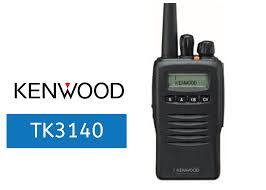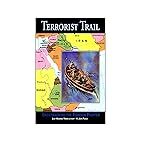I first learned of the Kenwood TK-3140 radio long ago, while working for the security department of a major US corporation. One of my projects was upgrading the radios for a surveillance team dedicated to fighting organized retail crime. At the time, digital radios were brand new. This "FleetSync" was an entirely new concept, a radio that functioned as an analog radio, but it had a built-in text message capability. This meant that for a surveillance team, they could communicate without raising a radio to their mouth.
Now, today, that's not all that uncommon, as DMR radios have increased in popularity and come down in cost. However, it is generally the realm of amateur radio operators, as most types of DMR require a license number (call sign) to access the system. Not so for the Kenwood FleetSync radios, at least for digital DATA, like text messages.
Recently, rule changes to GMRS have made short text messages legal over GMRS. The problem with that is that most modern DMR radios require an entire channel to operate as digital to do this. The FleetSync digital protocol on these TK-3140 radio doesn't require it, and it's secure. We'll talk about that farther down the article, for supporters only (become a supporter to learn the spicy stuff ya noob).
I recently got contacted by someone who knew I had used these and offered to sell me a complete sytem of 15 TK-3140 radios, two gang chargers, and some spare batteries for $600. Knowing that when I bought these for a company before they were each over $1500 new, I jumped at the chance. I mean, this made each unit $40, roughly the equivalent of a Baofeng radio. What a steal!
They are very compact and concealable radios, making them excellent for surveillance or clandestine communications. They are 5 watts, so just as powerful as most handheld radios. The units allow 250 channels, organized into zones with no limit on the number of channels per zone (motorola and others limit you to 16 channels per zone). They are certainly more rugged and more water-resistant than the Baofeng.
In fact, my students used these during my recent Fieldcraft class and they worked solidly.
The main drawback is that you need Kenwood's "Field Programming Unit (FPU)" software to program these, but it's widely available (even for free if you look) and a proprietary cable. I buy my cables from BlueMaxer 49 on Ebay, as his handmade cables work and are under $50 each. He also provides copies of the software as long as you buy a cable. He's also great about helping you through programming issues.
Another drawback is that you can buy these either as UHF (GMRS-style) or VHF (MURS/Marine Radio) but never both. The Baofeng is a dual band radio and these are not. I look at these as specific radios for clandestine work like intelligence gathering and surveillance, and Baofengs as tactical radios. They are different tools for different jobs.
Now, let's talk about using these for clandestine comms.


















